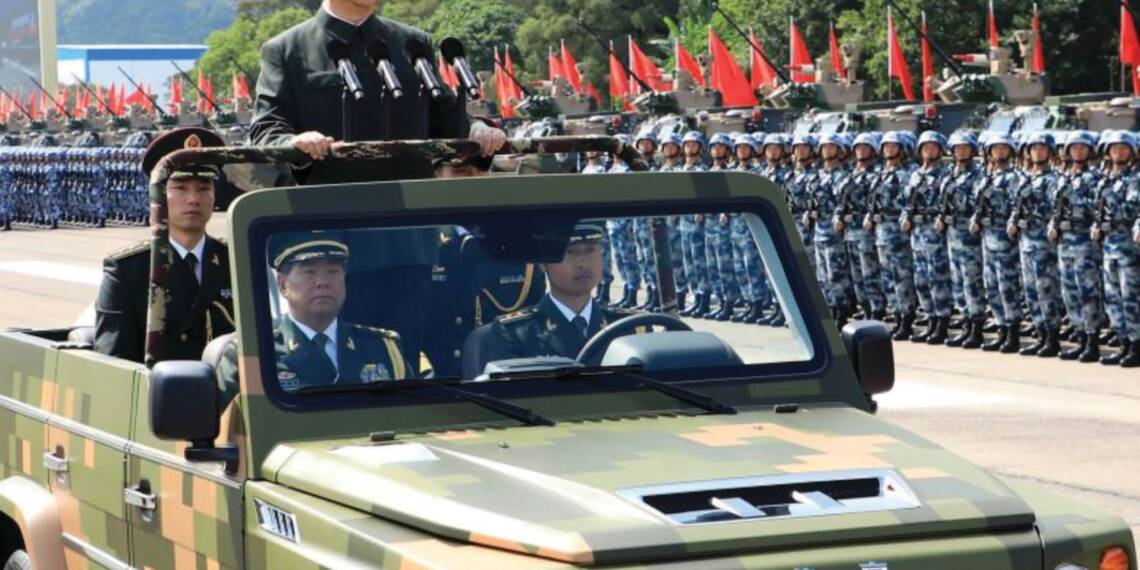In what Chinese state media has described as a “high-stakes aerial standoff,” a Chinese Z-10 attack helicopter reportedly intercepted a foreign military aircraft—believed to be American—in the Taiwan Strait, reigniting tensions between the United States and China in one of the world’s most sensitive geopolitical flashpoints.
The incident, which occurred on August 1, was broadcast by China’s state-run CCTV network. According to the report, the foreign aircraft entered within three nautical miles of China’s claimed territorial sea boundary in the Taiwan Strait. In response, a People’s Liberation Army (PLA) Z-10 attack helicopter was dispatched to intercept.
The Z-10 pilot, speaking to state media, claimed he issued repeated radio challenges. The foreign aircraft initially flew into cloud cover but later re-emerged and made what was described as a direct approach toward the Chinese helicopter, coming as close as 500 meters (1,650 feet). The pilot emphasized that his team “resolutely drove it away,” maintaining that the aircraft had encroached on China’s national security zone.
While the Chinese government did not formally name the aircraft’s origin, multiple reports suggest it was likely a U.S. Navy MH-60R Seahawk—a multi-role maritime helicopter typically deployed aboard American warships for surveillance, anti-submarine warfare, and reconnaissance.
The Z-10 is a Chinese attack helicopter developed for ground attack missions and close air support, similar to the American AH-64 Apache. It is armed with anti-tank missiles, cannons, and short-range air-to-air missiles. While not designed as a primary aerial interceptor, its use in this incident is significant.
China’s decision to use the Z-10 suggests a shift toward more aggressive, versatile, and symbolic posturing. Rather than waiting for fighter aircraft, PLA forces acted quickly with available assets—projecting both speed and resolve. The rare deployment of a ground-attack helicopter for an aerial intercept sends a message: China is willing to respond in real-time, even with unconventional means.
Is It the US, and What Is It Trying to Do?
Though not officially confirmed, all indicators point to the U.S. as the operator of the intercepted aircraft. The likely platform—a U.S. Navy MH-60R—regularly conducts patrols in international airspace and waters across the Indo-Pacific, including the Taiwan Strait.
The United States routinely conducts freedom of navigation operations (FONOPs) and military overflights in the Taiwan Strait and South China Sea to:
Assert that these waters and airspace are international, not under unilateral Chinese control; Challenge excessive maritime claims, particularly China’s claim over the median line in the Taiwan Strait;
It alao looks to reassure allies like Taiwan, Japan, and the Philippines that Washington remains committed to regional stability and the rules-based international order. While monitoring Chinese military movements, particularly those near Taiwan or key chokepoints like the Bashi Channel.
From the U.S. perspective, such missions are legal, routine, and necessary to deter unilateral changes to the status quo. The U.S. rejects China’s claims to “internal waters” in the Taiwan Strait and instead supports freedom of navigation and overflight under international law.
China, on the other hand, considers much of the Taiwan Strait and surrounding regions as falling under its sovereign control—especially the waters near its southeastern coastline. It views foreign surveillance flights and patrols as direct challenges to its authority, and particularly provocative when they occur near sensitive areas like the Fujian coast or Taiwan’s west coast.
Implications of the clash
This encounter adds to a growing list of tense air and sea interactions in the Indo-Pacific. Similar confrontations have occurred over the South China Sea, East China Sea, and near the Philippine coast. What sets this incident apart is the use of a rotary-wing gunship for an intercept—an unusual and high-risk move that reflects the speed at which such standoffs now escalate.
The U.S. has not officially commented on the August 1st incident, but it continues to urge China to abide by international aviation norms and maintain professional conduct during encounters.
As the Taiwan region heats up it seems the West knows that it is only a matter of time when the Chinese military and Navy charges towards Taiwan. China on its part maintains that Taiwan is its own territory and believes the West is meddling in its internal affairs. The encounters on the borders are now another sign of escalation that may result in a heavier and direct clash, which seem to be not far on the horizon.








